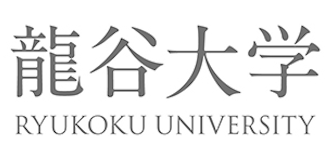
Ryukoku University (龍谷大学, Ryūkoku Daigaku), founded in 1639 as a seminary for Buddhist priests of the Nishi Hongan-ji denomination in Kyoto, Japan, stands among the nation’s oldest institutions of higher education. Initially named Gakuryo, it evolved from monastic training into a secularized university by 1876.
With over 20,000 students and a 30–39% acceptance rate, it integrates Shin Buddhist principles with modern academia across 12 faculties and 10 graduate schools. Its motto, “You, Unlimited,” reflects a commitment to holistic education grounded in values of equality, peace, and social responsibility.
Historical Evolution

- Founding Vision: Established by Abbot Ryonyo within Nishi-Hongwanji Temple, the seminary survived Edo-era suppression, reopening as Gakurin (Learners’ Forest) in 1655 after a shogunate-ordered shutdown.
- Modern Transformation: Secularized in 1876 as Daikyōkō (Great School), it incorporated Western education (e.g., German language courses) and constructed the Ōmiya Campus (1879), featuring Meiji-era buildings now designated Important Cultural Properties.
- Academic Milestones: Renamed Ryukoku University under the 1922 University Ordinance, it pioneered inclusivity by admitting female students in 1928 and launched Japan’s first general magazine, Chūōkōron, in 1887.
- Global Scholarship: Sponsored the Otani Expeditions (1903–1909) to Central Asia, recovering Buddhist artifacts like the “Libai Document”, preserved as National Treasures in the Ōmiya Library.
Campus Network
Ryukoku’s three campuses blend historical preservation with contemporary innovation:
- Ōmiya Campus: Birthplace of the university, housing 17th-century architecture and the Ōmiya Library—repository of 660,000 volumes, including Shin Buddhist texts and expedition artifacts.
- Fukakusa Campus: Established in 1960 on a former U.S. military base, it hosts administrative hubs and faculties like Law, Economics, and Policy Science. Its multimedia facilities support language and tech education.
- Seta Campus: Opened in 1989 in Biwako Cultural Park, it focuses on STEM and sociology, featuring the Ryukoku Extension Centre (REC) for industry-academia partnerships and community education.
Academic Excellence and Innovation
- Unique Programs: First Buddhist university globally to establish Agriculture (2015) and Advanced Science and Technology (2020) faculties, advancing its “Humanity, Science, Religion” triad.
- Research Leadership: Developed “Plant Doctor,” an AI-powered diagnostic tool using machine vision to monitor crop health, aiding sustainable agriculture. Ranked #404 globally for Robotics (2025).
- Sustainability Advocacy: Issued Japan’s inaugural Nature-Positive Declaration (2024), aligning Buddhist ecology (e.g., respect for shujōseken, “sentient beings”) with U.N. Sustainable Development Goals.
- Global Engagement: Hosts 300+ international students and partners with Harvard University (1987), National Taiwan University, and Taras Shevchenko National University (Ukraine support).
Institutional Impact
Ryukoku’s 380th-anniversary (2019) spurred the “Ryukoku Strategic Plan 400,” targeting Buddhist-inspired solutions for inequality and climate crises by 2039. Initiatives include:
- Free Legal Clinics (1972), providing community services while training law students.
- Digital Archives (2001), preserving cultural heritage through high-resolution digitization of national treasures.
- Dialect Rights Research, examining socio-legal impacts of regional languages like the Kansai dialect.